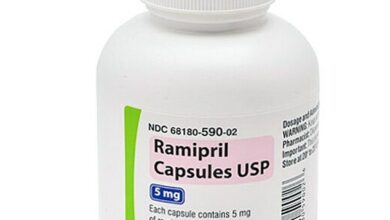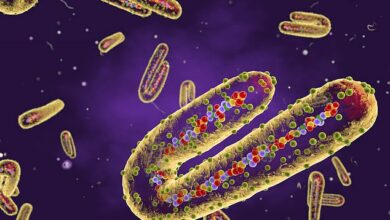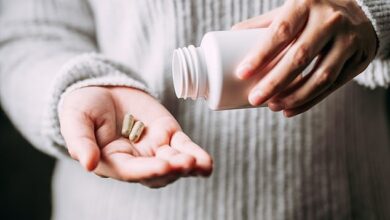Daily Mail health journalists test themselves for cancer-causing forever chemicals – with terrifying results









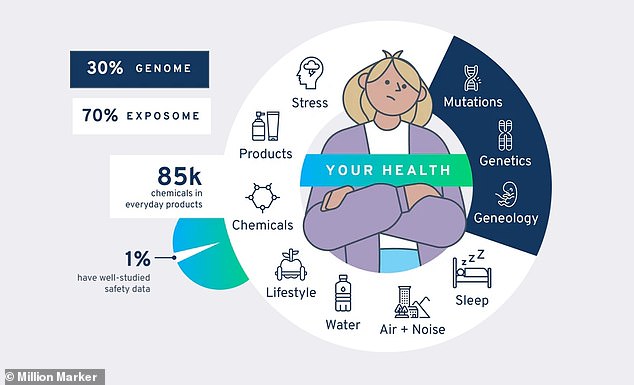

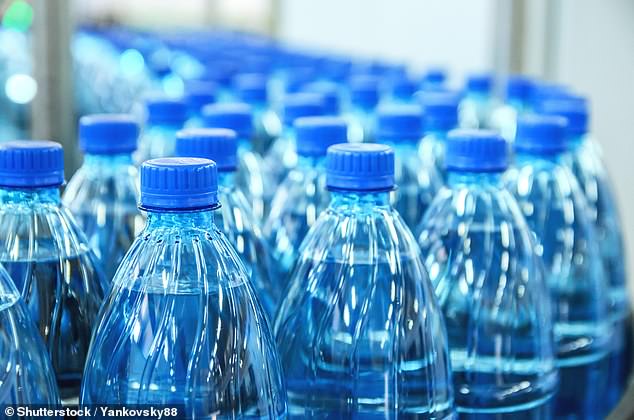

We’ve been writing extensively about the dangers of microplastics and ‘forever chemicals’ at DailyMail.com Health for years.
Little did we know that during that time, our bodies were accumulating alarming levels of these pernicious substances.
Four of us took FDA-approved urine tests that looked for nine types of chemicals which have been linked to cancer, fertility problems, diabetes and even autism.
We all had levels above average, with some so high they were literally off the charts, or ‘out of range.’


DailyMail.com’s deputy health editor Alexa Lardieri (left) had higher than average levels of forever chemicals in her urine and health reporter Emily Joshu (right) had some of the highest forever chemical levels among the group

The DailyMail.com Health team sent urine samples to the company Million Marker to be tested for levels of forever chemicals
With levels that high, doctors said it meant the chemicals are causing untold damage in our bodies.
The Million Marker’s Detect & Detox Kit works by having people pee in a cup and shipping it to the third-party lab to provide the analyses.
The lab then tests the urine for nine types of common chemicals, including seven different phthalates, chemicals used to make shampoos a flexible consistency – and two Bisphenols, chemicals used to make plastic food containers, among other things.
Million Marker compared the levels in our urine to US population data biomonitoring collected by the CDC.
About two months after we sent our samples in, we received our reports.
Accompanying all of our results was the stark warning: ‘REDUCE EXPOSURE NOW.’
The first set revealed our levels of phthalates.
These substances are found in makeup, nail polish, hair spray, body lotion, shampoos and cleansers.
They’re used to make products more flexible and able to withstand certain conditions, as well as help reduce cracking.
The substances have been linked to infertility, breast cancer, obesity, cardiovascular and neurological complications and behavioral problems.
Senior Health Reporter Luke Andrews, originally from the UK, fared the best compared to us Americans.
His test revealed he had levels higher than 55 percent of the population.
Compare that to my 61 percent, and our staff writers Emily Joshu (93 percent) and Peter Hess (96 percent).


Senior health reporter Luke Andrews (left) had the lowest levels of phthalates in his urine and science reporter Peter Hess (right) had some of the highest levels of forever chemicals in his urine

Instructions for the forever chemicals test recommended collecting urine first thing in the morning to get the most accurate results
The test also looked for high molecular weight phthalates, which are present in plastic, food packaging and dust. These types of phthalates are stronger, increasing their durability and permanency.
Again, there was a US-UK disparity. Luke’s measurement was higher than just two percent of Americans.
I tested at nine percent, Emily tested at 56 percent, while Peter had a whoppingly high score of 96 percent.
Peter said: ‘I was dismayed by my results, but I wasn’t exactly shocked because I know I’m exposed to lots of [forever chemicals]… in my daily life and since I’m being hit by these substances from every direction, it seems that I would have to go totally off the grid to avoid them.’
Sophia Ruan Gushée, an expert on body toxins and author of A to Z of D-Toxing: The Ultimate Guide to Reducing Our Toxic Exposures, told DailyMail.com she wasn’t surprised Luke’s results were lower than the Americans’ – he moved to the US from the UK about two years ago.
She said multiple studies have shown that Americans have higher levels of chemicals in their bodies and that our lifetime of increased exposure allowed substances to accumulate.
However, Luke’s exposure to lower levels meant he had a lower baseline and not as much accumulation.

My test results showed I had more more phthalates in my body than 61 percent of Americans tested by the CDC and more bisphenols than 88 percent of people
The UK bans four types of phthalates in children’s items, while the US only bans three.
The US has loose restrictions when it comes to phthalates in food products, while the UK severely limits seven types of the substances in all food contact materials.
And while there is no formal prohibition of phthalate use in American cosmetics, the UK either tightly controls or completely bans certain phthalates from cosmetic products.

Health reporter Emily Joshu had extremely high levels of the chemicals tested for
Ms Ruan Gushée said: ‘I just think there are common American habits that increase our toxicity – just us being used to a lot more disposable products.
‘In Europe, they grow up with more natural materials in their homes – more wood and less plastic – and higher quality materials.’
She also said his lower levels could be due to his lifelong habits that, despite having lived in Manhattan for two years, he continued to live by.
‘If his products are more European than American,’ that could explain his lower levels of phthalates, Ms Ruan Gushée added.
The Million Marker test listed several recommendations to reduce our levels of the chemicals, including switching to fragrance-free shampoos and creams and limiting exposure to strong air fresheners and candles.
It also recommended storing food in glass containers instead of plastic ones.
Next, we compared our levels of bisphenols, which are meant to make plastics harder and more durable. They are primarily found in plastics, such as water supply pipes, water bottles, baby bottles and microwave-safe dishes.
The chemicals can seep into foods and drinks and enter our bodies.

A Million Marker illustration demonstrates how much of an impact your environment has on your health

Hundreds of products have been revealed to contain forever chemicals that can have adverse effects on people’s health
The urinalysis tested for bisphenol A (BPA) and Bisphenol S (BPS).
They affect hormones like estrogen, androgen, progesterone and the thyroid, possibly leading to cancer, heart disease, infertility and eye damage.
The US FDA banned the use of BPA in baby bottles in 2012, and today, many plastic products are now advertised as ‘BPA free.’
Unlike with phthalates, Peter had the lowest levels of bisphenols, measuring higher than 68 percent of Americans tested by the CDC.
I had the second highest levels at 89 percent, while Luke was close behind at 88 percent.
Emily, however, had more bisphenols in her urine than 97 percent of Americans.
And when it came to BPA, her score was also 97 percent, while the rest of us resulted as ‘not detected.’
Emily said: ‘I was definitely shocked to see my bisphenols and BPA so high. I admit that I’ve fallen into some lazier habits in the past few months, such as ordering takeout.
‘I also recently started getting my lunches from a meal delivery service to cut down on time and money meal prepping, but these all come in plastic containers that get microwaved.
‘It also makes me concerned thinking about where specifically these are coming from and if I’ve been exposing my pets to harmful chemicals as well.’
Aside from exposing our pets, Emily and I were both worried about what this could mean if we ever become pregnant.
In a 2024 study, Chinese scientists analyzed the blood samples of 1,000 women for the presence of forever chemicals. The team found chemicals in the bloodstream were making their way into the placenta, umbilical cord and breast milk, exposing fetuses during pregnancy and babies after birth.
And our male colleagues have cause for concern as well. A 2024 study in mice found fathers exposed to forever chemicals may have offspring with genetic issues caused by those chemicals.
Next, results showed we all had detectable levels of BPS.
Emily’s was 29 percent, Peter’s was 68 percent, mine was 88 percent and Luke’s was 89 percent.
Luke was dismayed by these results. Calling his body his ‘temple of health,’ he questioned whether his daily workouts and clean, at-home eating ‘had all been for nothing.’
But while he may follow a healthy diet, his colleagues can’t help but notice he eats his lunches out of plastic food containers that have been reheated in the office microwave.
Heating plastics is one of the largest drivers of forever chemical exposure, and the Mayo Clinic warned forever chemicals found in plastics are released when the item is reheated.
Separately, University of Nebraska researchers found in a 2023 study that microwaving plastic containers releases billions of nanoplastics and millions of microplastics per every square centimeter of a plastic container.
The Nebraska team further discovered that embryotic kidney cells died two days after bring exposed to those particles.
A separate 2024 study from researchers in India found when food-grade plastics or food that had been in contact with the plastic are heated, BPA is released and leaches into the food item ‘and is thereby consumed, making it a potential candidate for causing serious health hazards.’
To ‘take action’ against bisphenols, Million Marker suggested avoiding food in plastic packaging, and opting for beverages in glass containers rather than plastic.
Buying food in bulk to cut down on plastic, limiting takeout food containers and even avoiding touching cash register receipts, which contain bisphenol-packed thermal paper, can also help reduce bisphenol exposure.
However, the recommendations seemed near-impossible. We have no control over what our friends or local businesses choose to scent their homes or stores and are we supposed to bring glass containers to restaurants for our leftovers?
Luke said: ‘The remedies for this situation seemed unobtainable. “Don’t buy food in plastic packaging,” the instructions said. Simple enough, I thought, but then it added, “and don’t buy things in cans either.”
‘Splendid. So I am meant to feed myself, how?
‘I would love to set up a farm in the 12-story apartment building that I share with 500-odd others, but I am quite sure a number of them would have a thing or two to say when the roots from my wheat plants start growing through their ceiling or some rogue chickens suddenly start nesting in the building elevator.’

Plastic water bottles could contain bisphenols, chemicals known as endocrine disruptors
Emily felt similar: ‘I’m left feeling more confused than ever, since I don’t know specifically where all these are coming from, and the idea of completely ditching chemical-ridden products for safer ones just feels overwhelming and expensive.’
However, Luke admitted his results did lead to small changes in his life.
Luke added: ‘Most of their recommendations were illogical bordering on the impossible to achieve, but there are a few I now do.
‘For example, I now always wash meat – particularly turkey – when it comes out of its plastic packaging to remove any microplastics.
‘I have also started to bulk buy what I can, mostly rice, and I am now trying to eat canned foods more than before, hoping whatever a can may release into food is less damaging than a microplastic.’
And Emily added: ‘I’m not sure where to start, though I’m hoping small steps like eating more food in glass containers and trying to get unscented body wash will provide even some small improvements.’
What seemed the most doable to all of us was trying to avoid plastic containers and water bottles. We can switch to glass, jars, reusable water bottles and reducing how much takeout we order can be good for both our bodies and our wallets.
However, I was particularly disappointed in my results because I already do most of these things.

Sophia Ruan Gushée has helped hundreds of people detoxify their lives
I only use glass Tupperware, I don’t wear perfume, my reusable water bottle goes everywhere with me and I won’t even buy scented waste bags for my dog.
But after seeing my results I’m curious – how do the majority of Americans keep their levels so low?
Looks like I’ll have to skip my beloved Friday-night Thai food and make space in my apartment for a bulk supply of my favorite nuts and granola.
Ms Ruan Gushée said it is important for people looking to make a change to start small because it’s impossible to completely eliminate these substances from your life all at once – or altogether.
She also said it’s important not to eliminate things that bring you joy. The lowest-hanging fruit for the hundreds of people she has helped detox is cleaning products.
As someone who loves a seasonal candle, Ms Ruan Gushée told me it was OK to keep burning my favorite scents, but could I then switch to cleaner household products, laundry detergents, body lotion or makeup?
She also recommended I open a window to allow for fresh air to circulate and suggested ‘healthier’ candles made out of beeswax so I could still enjoy my candles but also reduce my exposure to harmful chemicals.
Ms Ruan Gushée told this website: ‘When someone tells me “I love this red lipstick but I know it’s toxic,” my advice is, hold on to what you love.
‘There are so many other things we can modify and swap out. Most people find there are a lot of things in their homes they don’t need or want. So I work with people to develop a different lens or filter through which they declutter their stuff and edit their things.
‘So if you love candles… I would say let’s not touch those. Those bring you great joy. We can work on other things.’

